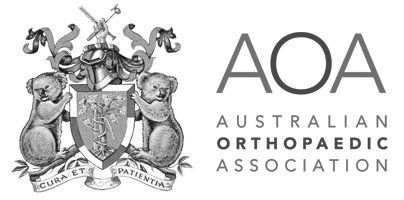Carpel Tunnel Syndrome
What Is Carpal Tunnel Syndrome?
One of the main nerves providing sensation and motor function to the hand crosses the wrist in a structure called ‘carpal tunnel’. The tunnel is formed by the carpal bones at the back and a strong ligament (flexor retinaculum) spanning across the palm side of the wrist. The carpal tunnel contains nine flexor tendons including their gliding surrounding tissue (tendon sheath) and the median nerve. As the nerve is the softest structure inside the carpal tunnel it can get entrapped in certain situations. One of them is when the wrist is held in flexion for longer periods of time. This happens typically at night as we tend to curl up and patients with carpal tunnel syndrome wake up with a numb hand or pins and needles in their fingers. This is called ‘nocturnal paraesthesia’.
What Is the Median Nerve?
The median nerve is one of three major peripheral nerves. Nerves provide the connection between the brain and periphery with skin and muscles. Nerve roots exiting the spinal cord at cervical spine levels between the 5th and 8th vertebral body are interconnected at shoulder level at the ‘brachial plexus’ and end up in three major nerves (radial, ulnar and median nerve). The median nerve runs in the middle of the forearm and crosses the wrist inside the carpal tunnel. It carries sensory fibres for the thumb, index and middle finger and one half of the ring finger. It also carries motor fibres for muscles in the ‘thenar’ which is the ball of your hand.
Who Gets Carpal Tunnel Syndrome?
Carpal tunnel syndrome is a common condition which spread across all age groups and genders. As an anatomical variant in some individuals, the carpal tunnel is ‘designed’ with a smaller volume which supports the development of the condition. In other cases, the gliding tissue of the flexor tendons inside the carpal tunnel (tendon sheath) swells which reduces the available space for the median nerve and nerve entrapment results. This can happen in patients who are heavy labourers or are exposed to repetitive and monotonous tasks. Some conditions like rheumatoid arthritis or pregnancy can also contribute to the development of carpal tunnel syndrome.
How Is Carpal Tunnel Syndrome Diagnosed?
The patient’s clinical history is typical with reports of waking up with a numb hand or difficulty opening a jar for instance. Some patients have noticed a tendency to drop things and loss of dexterity. On inspection in advanced cases, there is loss of muscle bulk in the ball of the hand (thenar) and reduced sensation in the thumb, index and middle finger as well as one half of the ring finger. As a provocative test, there is increased pins and needles (electric shock/paraesthesia) tapping the nerve at the level of the wrist (Tinel’s sign). This can also occur when the wrist is held in prolonged flexion or extension (Phalan’s test). Ultrasound often finds swelling of the nerve before and after the entrapment under the ‘flexor retinaculum’ and X-rays can identify degenerative changes of the wrist which can contribute to carpal tunnel syndrome. Nerves practically function as a cable as they conduct electricity and neurologist are able to measure the velocity and amplitude of the impulse crossing the carpal tunnel. This is called ‘nerve conduction study (NCS) as well as ‘electromyography’ (EMG).
Treatment for Carpal Tunnel Syndrome
Conservative management of carpal tunnel syndrome begins with activity modification where heavy labour, as well as repetitive and monotonous tasks, are the triggering events. Night splints are a useful aide to avoid flexing of the wrists and prevent ‘nocturnal paraesthesia’ (numb fingers at night time). Anti-inflammatory medication and cortisone injections can help relieve symptoms. If these non-operative measures fail surgery is an option.
Surgery for Carpal Tunnel Syndrome
The surgery for carpal tunnel syndrome is a small day case procedure where the ‘flexor retinaculum’ (strong ligament at the palm side of the wrist) is fully divided. The procedure can be carried out as endoscopic surgery but tit is Dr Rhau’s preference to perform the surgery via a limited incision of 3cm in the middle of the ball of the hand. That way the median nerve can be identified and protected whilst the ligament is split. In most cases, surgery is done under sedation (twilight anaesthesia) and local anaesthetic. It is possible to perform the surgery on both hands in one setting provided there is some support at home.
Preparing for Surgery for Carpal Tunnel Syndrome
If required we will arrange for the bulk-billed pre-admission clinic at the hospital. This is run by a specialist anaesthetist who will gather information and request investigations that are required for safe anaesthesia. Our reception staff will advise of costs, hospital and admission details.
Recovery from Surgery for Carpal Tunnel Syndrome
After the surgery, an elastic bandage will be placed at the wrist. it is encouraged to use the hand for light activities of daily living but leave the dressings dry and clean. We advise you to see a hand therapist for wound care and exercises and we will arrange this for you within the first few days after surgery. Sutures will be internal and the wound heals within ten days. Relief from pins and needles is often immediate and noticeable once the local anaesthetic has worn off.
However, in some cases, complete resolution of symptoms can take a few weeks and often this is depending on the time the nerve has been entrapped before release. Heavy lifting, pushing and pulling can be commenced four weeks after surgery.





